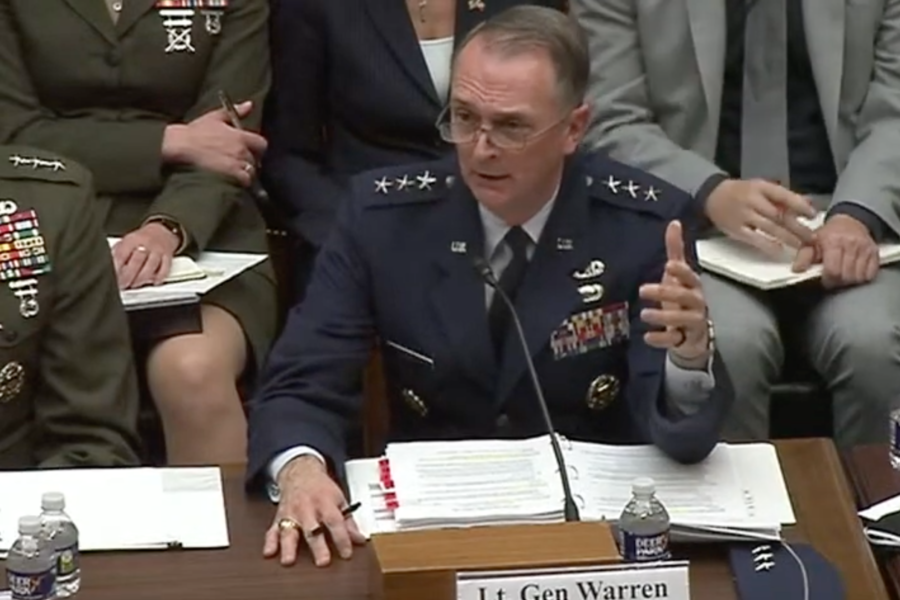The Air Force uses billions of gallons of fuel every year, the vast majority of it aviation fuel to power its fleet of aircraft.
But as the Defense Department seeks to increase its energy efficiency and secure its power grids, the department’s biggest consumer of fuel is looking at ways it can transition to other kinds of more sustainable energy, the Air Force’s deputy chief of staff for logistics, engineering, and force protection said Dec. 2.
Lt. Gen. Warren D. Berry, testifying before the House Armed Services readiness subcommittee on operational energy and logistics, told lawmakers that USAF wants to move from diesel fuel to electric batteries or solar cells for several key airfield operations.
“A large part of our support equipment that we use to generate air power [runs on] diesel. … There’s a great capability as we look at leveraging what commercial industry is doing with electrification, to use perhaps photovoltaic cells to provide lighting on the airfield, as we do aircraft operations or munitions loading operations, to electrify loaders that put munitions on aircraft,” Berry said.
Such a move, he argued, isn’t just about trying to be more environmentally friendly. It enables the service to build “resiliency and redundancy” and not be “beholden” to petroleum, oil, and lubricants. Lawmakers and generals at the Dec. 2 hearing noted that diesel fuel refined in different parts of the world does not always meet the same standards and can lead to engine issues.
As a whole, operational energy requirements have become an increasingly important consideration across military planning, said Air Force Lt. Gen. Sam C. Barrett, director of logistics for the Joint Staff. That’s especially true on the “tactical edge” in places such as the Indo-Pacific region, which covers massive swathes of territory.
“From our wargames and exercises, it is apparent that we have a persistent shortage of intra-theater distribution assets,” Barrett testified. “So if we look at the Pacific theatre, and I would dare say it’s not limited to the Pacific, but that is a significant focus—we are getting after that problem set.
“We define that problem set in terms of the last tactical 1,000 miles, because the theater is so big, but we have got to look at solution sets for intra-theater distribution going forward,” he added.
That issue, Barrett said, is linked to another takeaway from recent wargames and exercises: the need to treat operational energy as a global system. The Pentagon is working on an “end-to-end energy … common operating picture” so the Joint Staff can better develop requirements and oversight to ensure solutions.
And it’s not just an inter-service enterprise. Barrett said his final lesson learned from recent wargaming was “the importance of allies, and partners, and industry.”
“It jumps off the page at us on what we would need to do [going] forward,” Barrett said. “So we conducted numerous engagements with our allies and partners. They possess unique capabilities to help us diversify our energy needs in the Pacific theater and other places around the globe.”

